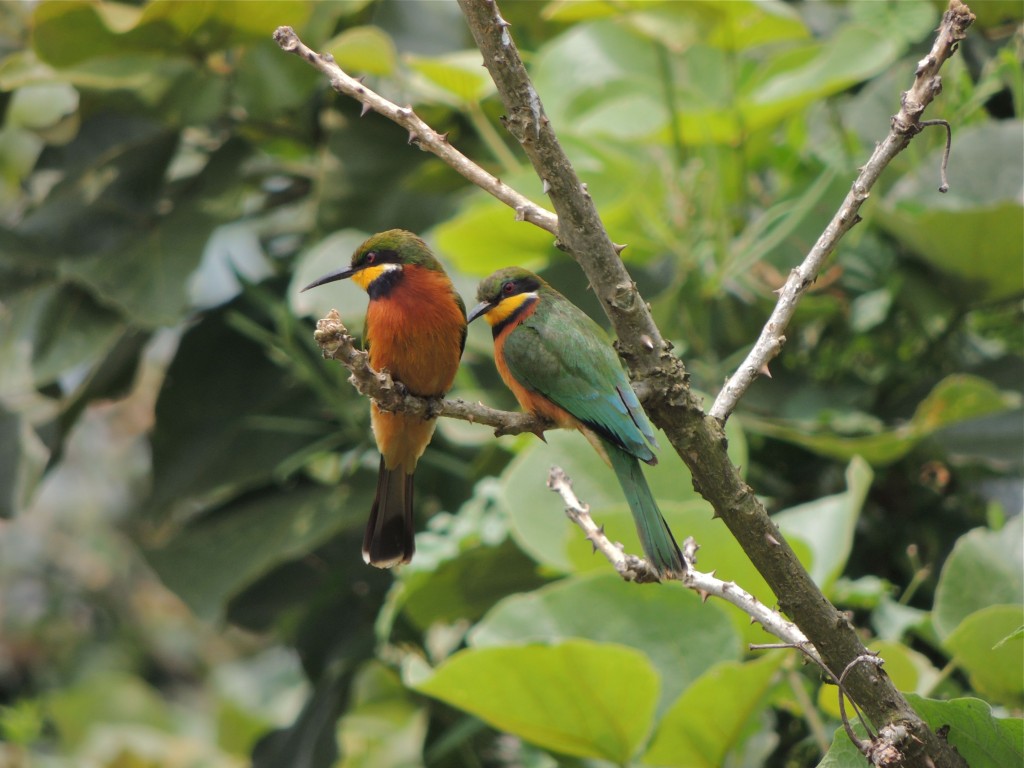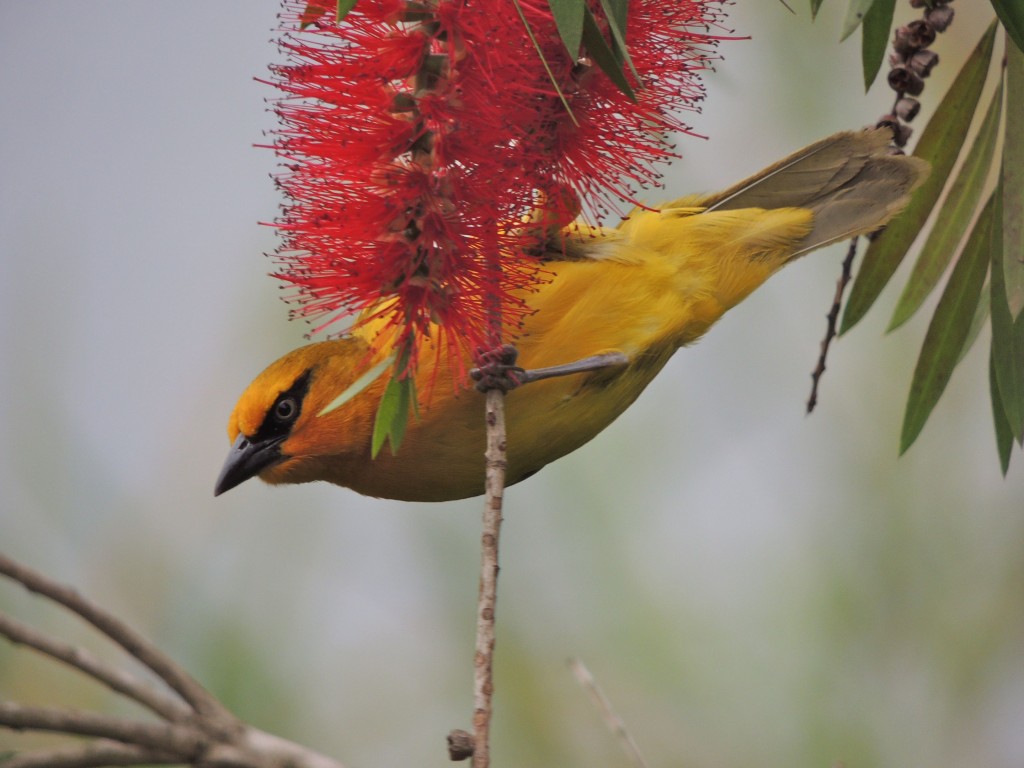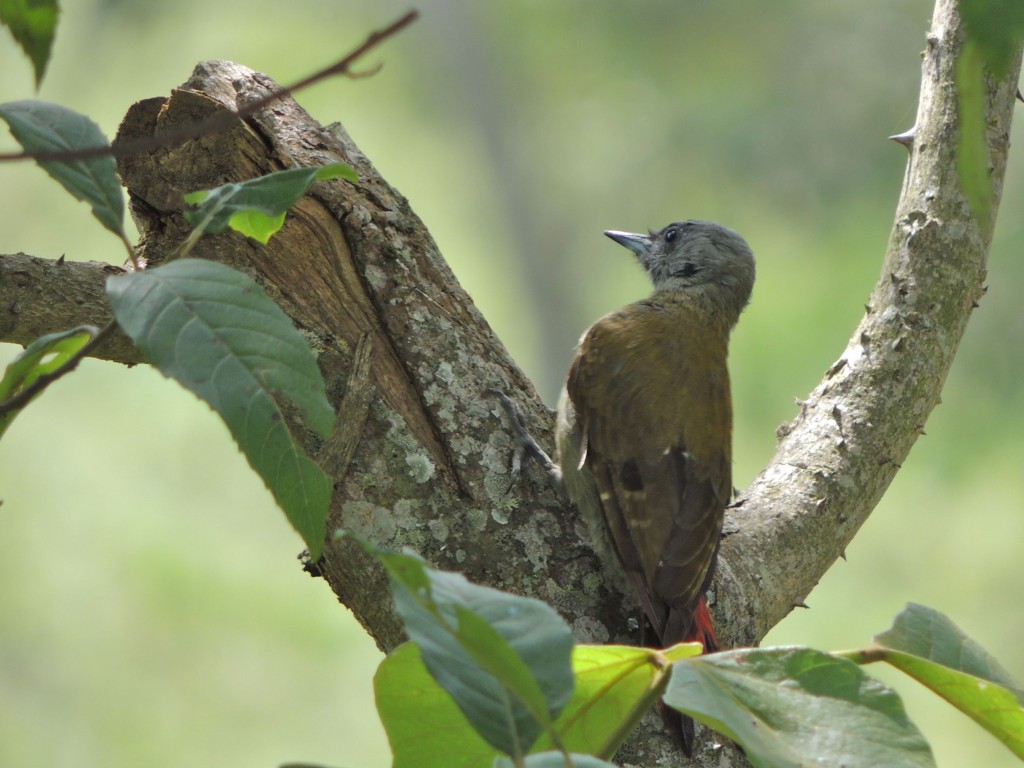Rubugari, Uganda. February 2016. While the Grey-Crested Crane is appropriately the official symbol of Uganda, if I had my way I’d to get the Cinnamon chested Bee Eater in the picture somehow. If you go back to one of my much earlier postings, (from Spain in September 2014,) you’ll read how the Bee Eater was one of my childhood daydream longings. In Spain I finally saw a couple of flocks and was able to cross them off my must-do-before-it’s-too late list. What I hadn’t truly appreciated was that the world has several bee- eater species. The field guide by my side, Birds of Eastern Africa, features seventeen bee eater species. They’re all unmistakably kith and kin, brightly dressed in greens, blues, chestnut and carmine, built like muscular swallows, slender and long-winged. They spend their days perching on a conspicuous branch watching for food. From there they sally out in loose-wheeling swoops to snap a bee or wasp out of the air and double back to the lookout post.
In my days here I’ve seen many Cinnamon-chested Bee-Eaters, more than enough to make them pretty routine, but I still get a tingle out of watching them. My local guide and companion, Justus, might secretly think I’ve wasted enough time on them, but if he does he’s too polite to say anything. I have taken many pictures, each time hoping for the definitive Bee Eater shot. These two were perhaps the best behaved.
Bwindi Impenetrable Forest Preserve (BIFP) usually attracts tourists with just one objective, to experience one of the closely regulated and limited face-to-face gorilla encounters. (Gorillas are shy, reasonably gentle herbivores in case you were wondering.) But an overnight stay for a one-day gorilla trek to encounter one of the handful of habituated gorilla families doesn’t really do justice to the area’s scenic richness. Neither does it do much to improve the standard of living of the locals; most benefits of gorilla tourism are going to foreign travel and hospitality concerns.

Somehow it seems I may have landed the perfect (volunteer) job for me. In an effort to expand birding as a tourism attraction my task is to find out which bird species can be found inside BIFP and where the promising bird tourism destinations are. I will be working with locals to find, identify, and if possible photograph, the best birds and consequently birding experiences. I’m seen as knowing what constitutes a good bird watching experience from the westerner tourist’s point of view. I work with a group of very enthusiastic local birders; they know the birds. Together we strive to make tourism into something more than just gorillas.

It sounds like a very special experience. I hope to hear more about it this spring.